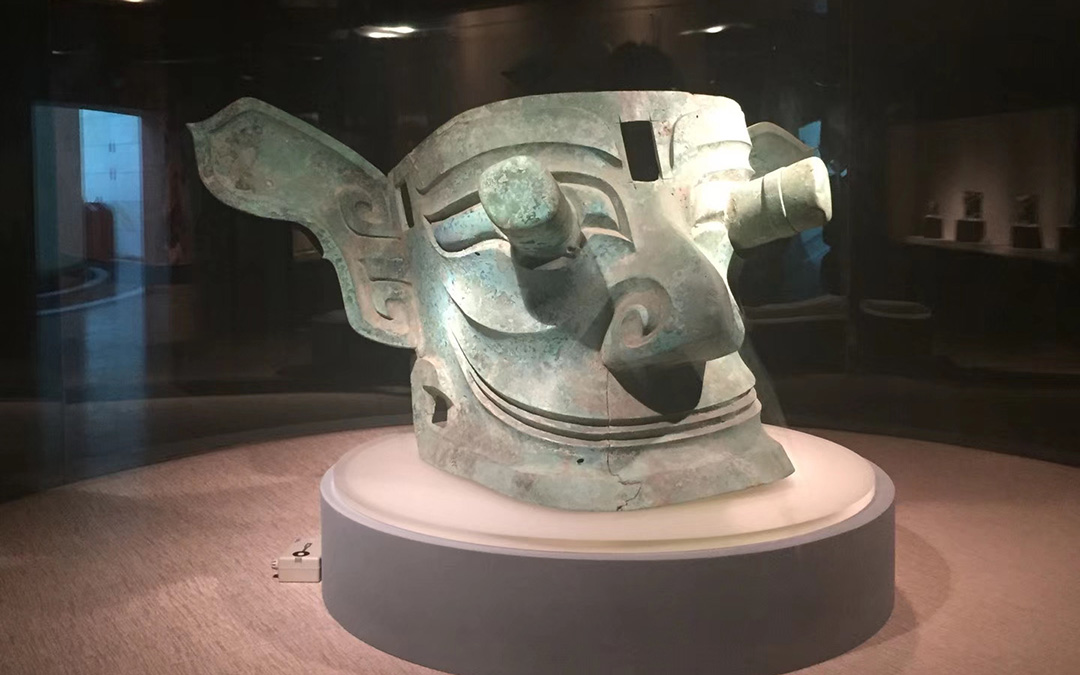Sanxingdui is situated at the bank of Duck River in the west of Guanghan City, Sichuan Province, 40 kilometers to the north of Chengdu and 26 kilometers to the south of Deyang.
Sanxingdui has many precious bronze and gold artifacts which include the world's oldest life-size standing human statue of 260 cm of height, the world's oldest gold cane of 142 cm, and a bronze tree with birds, flowers, and ornaments.
In 1986, in the Sanxingdui remains, two large sacrificial pits from the Shang Dynasty were discovered; thousands of natural treasures were unearthed. It was like a sudden Spring thunder, astonishing China and the world. Thus, Sanxingdui become famous. So many people have come to see it, traveling, exploring, and seeking their dreams. They all want to enjoy the sights and the elegance of the treasures in Sanxingdui.
The scientific discoveries and excavations at Sanxingdui have unveiled the history of Ancient Shu from a period 5,000 years ago. The Sanxingdui remains are composed of several large relic areas. They areas are the largest, most important and elegant ancient Shu cultural relics sites in Sichuan. The remains cover 12 square-km in total. Life went on here about 2,800 to 4,800 years ago, equivalent to the late Neolithic Age. The remains include six places: Sanxingdui on the south bank of Mamu River, the Moon Bend (that is, the tableland between the Mamu River and the Duck River), Shi Zinao to the east of the remains, Hen Liangzi in the west, Xi Quankan on the south bank of the Duck River and Dongsheng temple. The six areas belong to the central remains adapting a division of labor and social relationships. The areas are "Sanxingdui ancient country"encircled with city walls in the east, west, and south. This was just the remote Kingdom of Shu.
There are 2 sacrificial pits that were excavated. No.1 sacrificial pit was discovered on 18th July 1986. Lying in the south of Sanxingdui, on the site of the Lanxing Second Brick Factory, over ten jade dagger-axes and jade tablets were exposed by workers, triggering a rush by archaeologists. They immediately worked out a digging program and set to work. On the 24th of July, the cultural layer was cleared out; the tamped-down earth was exposed in the pit and connecting tunnel. On the 25th and 26th, some bronze dagger-axes, with features of the early Shang Dynasty were unearthed one by one. These were followed by a gentle bronze image with long hair, a helmet and facemask.
No.2 sacrificial pit was discovered on the evening of the 14th August in 1986. Just when the excavation of No.1 pit was over, the tired but happy archaeologists were about to return, when they were brought more surprising news. In the southeast, between 20m and 30m from No.1 pit, when the workers in the brick factory were taking away the earth, they found a bronze image. Its eye sockets, eyebrows and lips had been decorated. Quickly, part of the No.2 pit appeared. The archaeologists quickly protected the site. From the 20th of August, the excavation to No.2 pit began. After ten day's work, the archaeologists found the hardened clay was similar to the No.1 pit. There were also traces of digging by people during the, but, fortunately, they hadn't penetrated very far; otherwise, the treasures would have disappeared long ago. After clearing out the tamped-down earth, they found a large the lower jaw of an animal-faced sculpture. Then, over ten crisscross ivory pieces appeared.
The remaining objects in No.2 pit can be divided into three stories: upper, middle and lower. In the upper story, there were some 60 elephant tusks; the middle story was mainly filled with bronze wares, such as a large standing man, the sculpture of a man's face, sun wheel etc; in the lower story, there were plant ashes, charcoal powder and small bronze wares.







